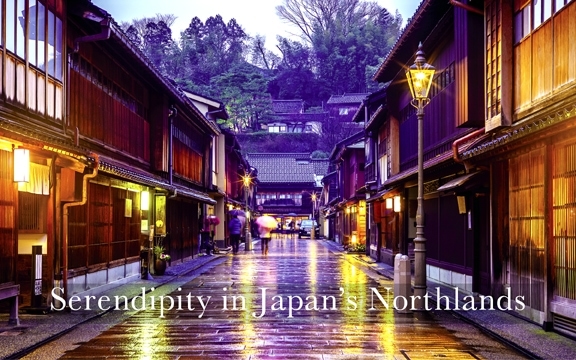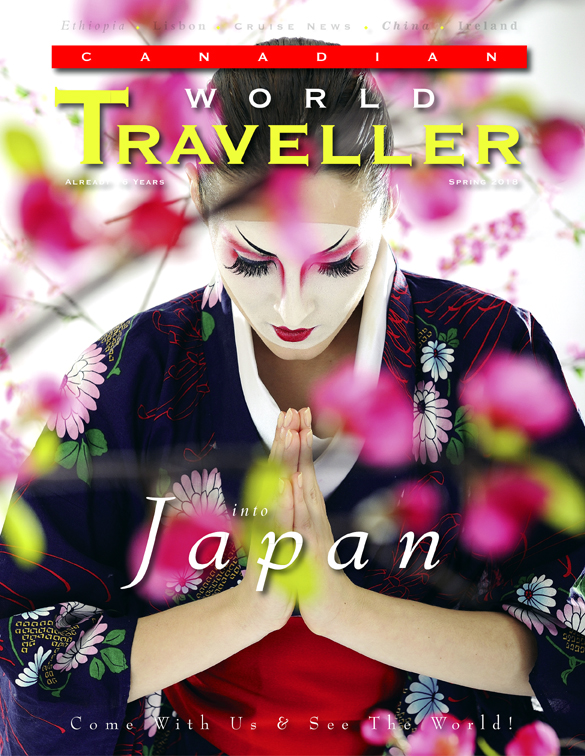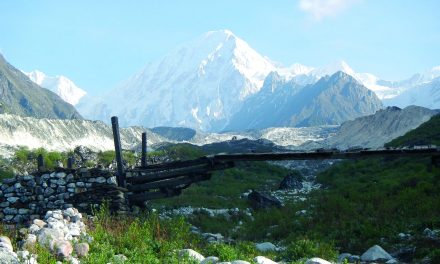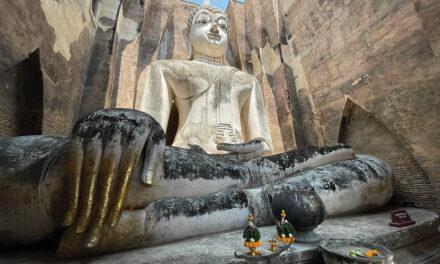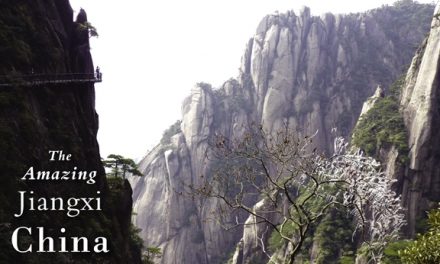Japan
Serendipity in Japan’s Northlands
Article and photography by Steve Gillick

Follow an Ox to Zenkoji! This sage advice is explained by a legendary Japanese fable. We stood before the main hall of the 7th Century Zenkoji Temple in the city of Nagano as our guide related the story of the old, faithless woman who lived in a small village nearby. Despite the urgings of her neighbors, she refused to join them to pray at Zenkoji Temple. One day while she was doing her laundry in the stream, an Ox wandered by, ensnared one of the woman’s cloths on its horns, and ran away with it. The infuriated woman chased the Ox, and eventually followed it into the main hall of Zenkoji Temple. Inside, her cloth was hanging on the statue of Kannon, the Goddess of Mercy. The run had tired her out and as it was already late in the day, the woman lay down to sleep. That night, the Buddha appeared in her dreams. Thereafter the woman devoted her life to repentance, and at the end of her life she was allowed to enter Paradise.
The proverb about following an Ox to Zenkoji, advises that experiencing the unexpected can lead to something good. Many travelers would recognize this as ‘serendipity’; something that turns a mundane travel experience into an exciting and memorable adventure, and Japan’s Northlands are certainly a prime example.
The Northlands, translated as ‘Hokuriku’, embrace the north shore of Honshu, Japan’s largest and most visited island. While millions of travelers visit Tokyo and Yokohama on Honshu’s south shore each year, only a fraction venture off the traditional tourist path. With Japan Rail’s new Hokuriku Arch Pass it’s easier now for travelers to hop on the train and discover amazing sights, memorable cuisine, welcoming people and unique experiences.
The “Arch” is really a semi-circle of fascinating places that lie north of Tokyo and one can start exploring as quickly as one hour away in Gunma Prefecture with a visit to Takasaki. As soon as you leave the train station you see the huge statue of Kannon, the same Goddess of Mercy as in the Zenkoji proverb, standing 41.8 meters high (137 feet) on a hill overlooking the city. The views from the base and inside the statue are picturesque-impressive.
Not too far away, hundreds of Daruma dolls rest in large bins on either side of the 300 year old Daruma Temple. The dolls depict the face of Bodidharma, the monk who founded Zen Buddhism around the beginning of the 6th century. When a doll is purchased from the gift shop, one of the monks will chant a blessing and then draw a dot in the blank space where the left eye would normally appear. The owners are instructed to draw a circle around the left pupil when they arrive home, and then make a wish. After one year, if the wish is fulfilled, they can draw in the right eye to acknowledge that the Daruma doll can now “see”.
Nearby, Jun-ichi Nakata, who has been painting Daruma dolls for most of his life, runs a workshop where visitors learn to paint the doll’s eyebrows, that are really two cranes facing each other (representing 1000 years of life), as well as the mustache, which is really two turtles (representing 10,000 years of life). When Nakata-san is not painting Daruma dolls, he celebrates life through his love of driving race cars!
Of course inspiration comes in all shapes and sizes. Just outside of Itoigawa City, a bright red bridge connects the mainland to Benten-iwa, a rock island, on which a shrine is dedicated to Benzaiten, the God of Safety Navigation and also one of the Seven Gods of Good Fortune. Volcanic activity in the ancient Fossa Magna Sea formed this small island but on a larger scale, it created the Islands of Japan, the Japanese Alps, and the country’s rich fishing reefs. The Fossa Magna Museum in Itoigawa City has excellent displays and videos to explain these geographical wonders.
And the bounties of the sea are no more evident than at Kaniya Yokocho, or ‘Crab Market Street’ in the village of Nou. The seafood shops showcase hundreds of Benizuwai (Red Snow) Crabs in tantalizing displays. The vendors offer tastes of uber-fresh crab leg to would-be customers to savour. Our guide led us to a sunny, grassy area behind the market by the Sea of Japan and, ignoring the hungry stares of the sun-bathing Cormorants, she held up a piece of crab and announced ‘you each get two’. We assumed this meant two crab legs. But then we were each handed two whole (large) crabs and a can of Kirin beer and, with a wish of “Itadakimas” (good appetite), we experienced taste bud heaven!
Not to be outdone, we added more golden moments of taste the next day in Kanazawa. We wandered around the Higashi Chaya District, which was the city’s entertainment area in the 19th century. Passing by the teahouses where geisha would entertain clients with singing, dancing and drinking games, our guide took us to Hakuichi, a shop that literally means “Number One (Gold) Leaf” where we were treated to an ice cream cone covered in gold! The gold leaf was about 1/10,000 of a millimeter thick. It didn’t really affect the taste of the $10.00 US ice cream, but the idea of eating gold is great for selfies, social media posts and King Midus wannabes.
Food for thought is one thing but our travels also provided for some mindful opportunities. Just outside of Ono City at the Hokyoji or ‘Good Treasure’ Temple, we were invited to participate in a Zazen Workshop. One of the monks explained the proper sitting, walking and hand positions involved in Zen meditation and then instructed, “Just as the clouds drift in the sky let your thoughts drift away…empty your mind”. Let’s just say that my mind was fixated on the gold ice cream I had the day before, so I, for one, need a bit more practice.
However later that day we had another opportunity to relax our minds. In Echizen, we visited the Okamoto Otaki Shrine. Five villages in the area have been making paper since the 6th century and the nearby Shrine provides a home for the paper goddess, Kawakamigozen, when she is not in her abode in the mountain clouds. The Shrine is an architectural wonder with an elaborate roof that hides protective dragons and shishi, fierce lion dogs, in the ancient wooden beams below, while the side panels of the shrine depict legends, intricately carved into the wood.
Discovery and serendipity often go hand-in-hand and our travels in Hokuriku just touched some of the surprises that, depending on time to explore, could also include the market and museums in Takayama, the ‘praying hands’ houses in Shirakawago, the Snow Monkeys at Jigokudani, and the fascinating journey along the Alpine Route that passes under Mt. Tateyama, one of Japan’s three sacred mountains.
In Hokuriku you walk down one path and find a temple or shrine; you walk down another and are overcome by beautiful attractions; and you embark on a third path to discover fun and engagement with local people and local foods.
Follow an Ox to Zenkoji… and just look at some of the results you can experience!
http://hokuriku-arch-pass.com/en/
Click on cover to view published article

